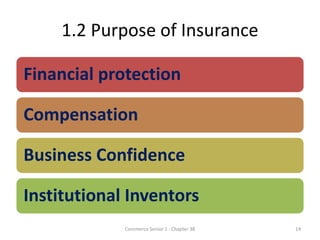Excitement About Pacific Prime
Excitement About Pacific Prime
Blog Article
The 2-Minute Rule for Pacific Prime
Table of ContentsGet This Report on Pacific PrimeThe 3-Minute Rule for Pacific PrimeGetting My Pacific Prime To WorkTop Guidelines Of Pacific PrimeA Biased View of Pacific Prime

This is since the information were gathered for a duration of strong economic efficiency. Of the estimated 42 million individuals that were uninsured, all but regarding 420,000 (concerning 1 percent) were under 65 years of age, the age at which most Americans come to be qualified for Medicare; 32 million were grownups in between ages 18 and 65, about 19 percent of all adults in this age; and 10 million were youngsters under 18 years of age, about 13.9 percent of all kids (Mills, 2000).
These price quotes of the variety of individuals without insurance are generated from the annual March Supplement to the Present Population Survey (CPS), carried out by the Demographics Bureau. Unless or else noted, nationwide price quotes of individuals without medical insurance and percentages of the population with different type of coverage are based on the CPS, the most commonly utilized resource of price quotes of insurance coverage and uninsurance rates.
The 6-Minute Rule for Pacific Prime
:max_bytes(150000):strip_icc()/basics-to-help-you-understand-how-insurance-works-4783595_final-9cf74d5b66d14f88a21ab29ddb290e2d.png)
Still, the CPS is particularly helpful since it produces annual price quotes relatively rapidly, reporting the previous year's insurance protection approximates each September, and since it is the basis for a regular collection of quotes for more than two decades, enabling analysis of fads in protection in time. For these reasons, as well as the extensive usage of the CPS in various other research studies of insurance protection that are offered in this report, we rely on CPS estimates, with limitations kept in mind.

The estimate of the variety of without insurance people broadens when a population's insurance status is tracked for numerous years. Over a three-year period starting early in 1993, 72 million people, 29 percent of the united state population, lacked insurance coverage for at least one month. Within a single year (1994 ), 53 million people experienced a minimum of a month without protection (Bennefield, 1998a)
Six out of every 10 without insurance adults are themselves employed. Functioning does improve the chance that one and one's family participants will have insurance coverage, it is not a guarantee. Even participants of households with two full time breadwinner have nearly a one-in-ten chance of being without insurance (9.1 percent uninsured rate) (Hoffman and Pohl, 2000).
10 Simple Techniques For Pacific Prime
New immigrants represent a substantial proportion of individuals without medical insurance. One analysis has associated a significant portion of the recent growth in the dimension of the U.S. uninsured populace to immigrants who showed up in the nation between 1994 and 1998 (Camarota and Edwards, 2000). Recent immigrants (those who involved the USA within the previous 4 years) do have a high rate of being without insurance (46 percent), yet they and their youngsters make up simply 6 percent of those without insurance coverage country wide (Holahan et al., 2001).
The connection in between medical insurance and access to care is well established, as documented later in this chapter. Although the connection in between medical insurance and health and wellness end results is neither direct neither straightforward, a comprehensive scientific and wellness solutions study literary works links medical insurance protection to enhanced access to care, better quality, and boosted individual and population health and wellness status.
Degrees of analysis for analyzing the effects of uninsurance. websites It focuses especially on those without any type of wellness insurance coverage for any kind of size of time.
The smart Trick of Pacific Prime That Nobody is Discussing
The troubles dealt with by the underinsured are in some respects comparable to those encountered by the without insurance, although they are typically much less serious. Health insurance policy, nonetheless, is neither needed nor enough to acquire access to clinical solutions. The independent and direct impact of health insurance policy coverage on accessibility to wellness services is well developed.
Others will get the healthcare they require even without wellness insurance coverage, by spending for it expense or seeking it from providers that offer treatment totally free or at very subsidized rates. For still others, medical insurance alone does not ensure invoice of treatment because of various other nonfinancial barriers, such as an absence of health care providers in their area, limited access to transport, illiteracy, or linguistic and social distinctions.
Not known Facts About Pacific Prime
Official study regarding without insurance populaces in the USA dates to the late 1920s and very early 1930s when the Board on the Price of Medical Care created a series of reports regarding financing doctor workplace check outs and hospital stays. This concern came to be significant as the varieties of medically indigent climbed during the Great Depression.
Report this page